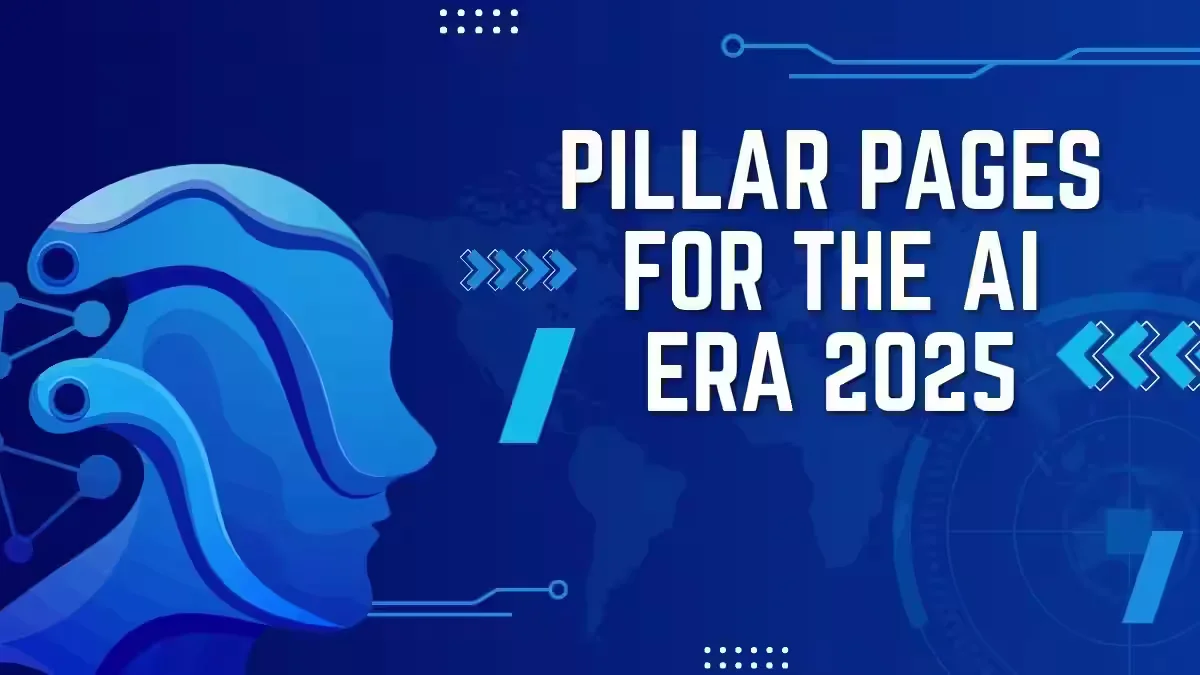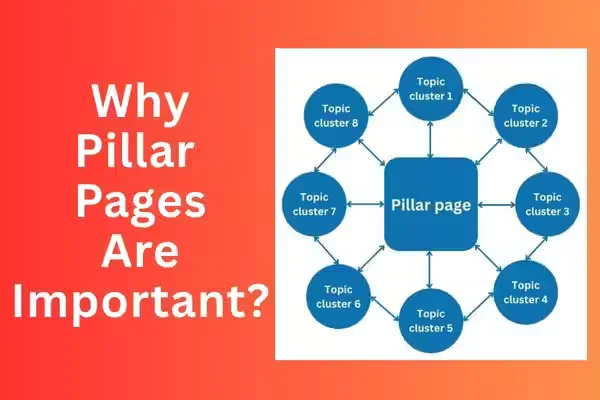
Pillar Pages for the AI Era: What to Include in 2025
Table of Contents
In 2025, the arena of SEO isn’t simply about keywords and backlinks, it’s about structuring your content ecosystem so that both your users and new-generation search interfaces (including AI-powered answer engines) recognise your site as an authority. Enter the concept of the pillar page: a major piece of content that anchors a topic cluster, connects internal linking, and signals topical authority. Let’s explore how to build pillar pages in the AI era of search engine optimisation.
What is a Pillar Page and Why It Matters
A pillar page is a comprehensive, authoritative page on a broad topic that acts as a hub. From that hub, you link out to more focused “cluster” pages that explore subtopics in depth. According to SEO experts, pillar pages organise content around one theme, make site architecture clearer for crawlers, and help build topical authority.

Why Pillar Pages matters in 2025?
- Search engines and generative-AI answer engines increasingly care about structure, internal linking, context, and intent rather than simply keyword density.
- A well-designed pillar page shows both users and machines that you cover a topic comprehensively, from broad overview to detailed sub-questions.
- It becomes a long-term asset: instead of many disconnected blog posts, you build one foundational page and feed it supporting content.
How to Create Pillar Pages for the AI-Driven Search?
Choose Your Core Topic Wisely
Start by identifying a broad topic that aligns with your business, that has meaningful search volume, and that can spawn multiple subtopics. For example: “SEO in 2025,” “Generative search optimisation,” “Hub and spoke content strategy.”
Choosing a core topic sets the stage for your pillar page and the supporting cluster pages.
- The rise of generative-search and answer engines.
- Technical SEO fundamentals for AI-search indexing.
- Internal linking strategy and content architecture.
- Zero-click search optimisation and featured snippet performance.
- Content freshness, structured data, and AI relevance.
This cluster architecture helps you build thin, focused pages that link back to the pillar — and the pillar links out to them. That internal linking reinforces your topical relevance.
Write the Pillar Page: Comprehensive + Scannable
Your pillar page should:
- Cover “what is”, “why it matters”, “how to”, and “next steps” for the core topic.
- Use clear headings (H2, H3) for readability and crawlability.
- Provide short-answer boxes or quick summaries for users who just want a fast overview (important for generative search).
- Link to each cluster page and mention them as deeper dives.
- Include visuals, graphics, or embedded content to increase engagement and signal quality. As one source notes: “A pillar page is like a high-level table of contents for a certain topic.”
Optimise for Modern Search Signals
In 2025, content optimisation goes beyond traditional on-page tactics. Key areas to address:
- User intent and experience: Focus on storytelling, value, readability, not just keyword stuffing.
- Technical performance: Site speed, mobile responsiveness, structured data (schema), semantic HTML, all matter.
- Internal linking & content architecture: The pillar must link to cluster content and cluster pages must link back. This strengthens site structure and topical authority.
- Generative search / Answer engines: Because we’re entering an era where AI-powered systems synthesise answers, the structure, clarity and authority of a page matter more than ever.
Promote, Update and Maintain
Creating the pillar page is just the start. To keep it relevant and index-worthy:
- Regularly update the content as your topic evolves (e.g., new trends in SEO, algorithm changes).
- Monitor performance: use analytics to check organic traffic, user behaviour, internal clicks to cluster pages.
- Promote the pillar via social, email, and other channels so the page gains visibility and potential backlinks.
- Refresh cluster pages and ensure the linking remains consistent.
In the Era of AI, Pillar Pages are more important

Topical authority beats keyword tricks
Search engines in 2025 place more value on showing that you truly understand a topic and provide value, rather than just matching keywords.
Generative search engines and zero-click answers
Many users now get answers directly in the search result (or via chat/AI assistants), meaning you must aim to satisfy both “click-through” and “answer-provided” scenarios. A pillar page with strong structure is better placed for both.
Content clusters become essential
With the volume of content online, simply writing standalone blog posts isn’t enough. A pillar + clusters architecture helps your site show breadth AND depth, which builds trust in the algorithm’s eyes.
Enhanced internal linking = better crawl-path for search bots
The pillar page provides the gateway; cluster content populates the network. This logical structure helps search engines index your content more efficiently.
Common Mistakes to Avoid

- Too shallow or generic pillar content: If your pillar page offers only a superficial overview and few real insights, you miss the information gain that differentiates you.
- Neglecting internal linking or cluster structure: A pillar page without cluster links (or cluster pages not linked) breaks the architecture and undermines the strategy.
- Ignoring user-experience or technical performance: Slow loading pages, mobile issues, or poor readability will hurt performance regardless of content quality.
- Treating it as a one-and-done project: The topic evolves, search intent shifts, AI impacts change — you must revisit and refresh regularly.
- Over-relying on keywords only: In 2025 you’ll lose more from ignoring intent, structure, and context than you’ll gain from brute-force keyword volume.
Your Checklist: Launching a Pillar Page for 2025
- Choose a broad, meaningful core topic aligned with your brand and audience.
- Map 5-10 supporting cluster topics (each will become its own page).
- Create the pillar page (4,000+ words ideally) with clear sections: definition, importance, how-to, next steps.
- Link internally to each cluster page, and ensure cluster pages link back to the pillar.
- Apply on-page optimisation: title tag, meta description, headings, semantic HTML, schema markup.
- Ensure your site technical foundation is solid: mobile-friendly, fast-loading, no crawl errors.
- Promote your pillar page across channels and begin gathering relevant backlinks.
- Promote your pillar page across channels and begin gathering relevant backlinks.
- Monitor metrics monthly: organic traffic, time on page, internal click-through to clusters, rankings.
- Refresh content quarterly (or sooner if major developments emerge) to keep the page current and authoritative.
Final Thoughts
In 2025, if you treat content like a random blog-post factory, you’ll struggle to keep up. Instead, treat your website as a topic-authority hub built around thoughtfully structured pillar pages and connected cluster content. That foundation, clear architecture, internal linking, excellent user-experience, and modern optimisation—will help you adapt to both classic search engines and the rising wave of generative/AI search.
Baripada Corporate Office
Location :
SEO Impact Pro
RI Office Lane, Baghra Road,
Baripada, IN, 757001
Email :
admin@seoimpactpro.com
Sales Enquiry :
+91-9621644917
Let’s Do Great Work Together
Get in touch with our Digital Marketing experts today

